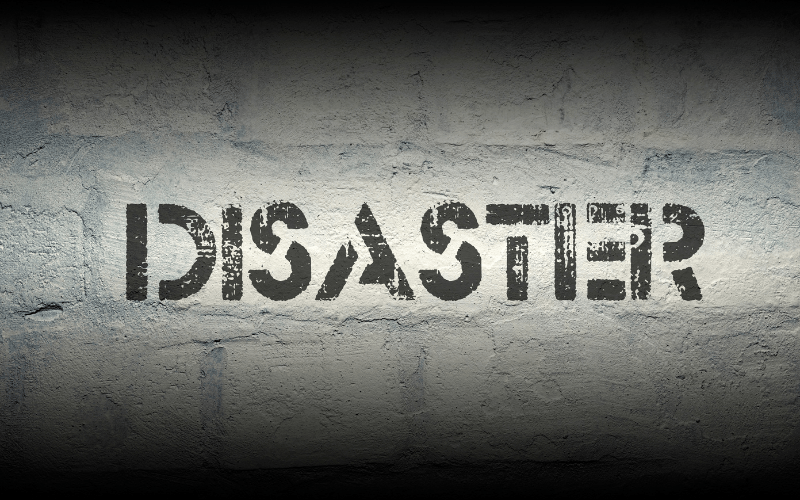EMDR and Psychedelic-Assisted Psychotherapy: Expanding Healing Possibilities
Guest Blog Post by Rotem Brayer, LPC
John (not his real name) is a man in his 50s who had been depressed for as long as he could remember. His childhood involved emotional neglect and inconsistent caregiving, the kind of early attachment trauma that shapes a person’s nervous system and sense of self. Over the years, John tried nearly every available treatment: traditional talk therapy, CBT, Ego State Therapy, somatic therapies, medications that included multiple SSRIs and SNRIs, and Transcranial Magnetic Stimulation (TMS). Some brought mild, short-term relief. Most made little meaningful impact.
When John came to see me for therapy, we worked with a combination of EMDR therapy and Ego State Therapy. He was engaged, committed, and insightful. We saw progress, especially in how he related to his younger parts. But the deeper change we aimed for didn’t take hold. It was as if we kept approaching the edges of his emotional wound but couldn’t fully process it.
After about a year and a half of therapy, I asked John if he would be interested in integrating Ketamine-Assisted Psychotherapy (KAP) with EMDR therapy. He was open. After years of trying so many types of therapy with limited outcomes, he felt ready to try something different.
The ketamine sessions, integrated with EMDR therapy, created a shift I had not seen in my early work with John. For the first time, John’s emotional defenses softened enough to allow direct engagement with his traumatic memories. The medicine helped us access material that had always been there but stayed out of reach, protected by a system that had learned long ago that it wasn’t safe to feel.
In our KAP sessions, we integrated EMDR with parts work. The medicine gave us access, EMDR gave us direction, and the internal system gave us permission. This integration helped John access traumatic memories and the emotions they carried, something we hadn’t been able to reach before. Accessing those emotions made reprocessing more effective and lasting.
KAP accessing and EMDR reprocessing partner for lasting change
Ecker (2024) explains that for therapeutic change to be lasting, the emotional learning that underlies a symptom must first be activated and then contradicted by a new emotional experience. This process, known as memory reconsolidation, requires the original emotional memory to be accessed, not just the cognitive narrative. EMDR is not a cognitive therapy; its outcomes depend on accessing the emotional core of a memory to interrupt the patterns that keep symptoms going. When emotional activation is limited, reprocessing still occurs, but the changes are often more surface-level and not sustainable. In John’s case, the emotional access in our KAP sessions made deeper reprocessing possible. It is also important to note that this kind of work wasn’t built in a day; the long-term therapeutic relationship we had developed over time was a critical foundation for what became possible.
The emerging field of psychedelics
At the Psychedelic Science Conference in Denver in June 2025, I was impressed by the depth and range of research emerging around psychedelic medicines. There are promising studies not only on MDMA, psilocybin, and ketamine, but also on DMT, 5-MeO-DMT, ibogaine, and other psychedelic medicines. The science is catching up to what many psychedelic therapists have witnessed firsthand: these medicines can support healing in ways that until recently were out of reach.
Here are a few encouraging findings from the past few years:
- MDMA: In a Phase 3 trial, 67% of participants no longer met criteria for PTSD after three MDMA-assisted therapy sessions, compared to 32% in the placebo group (Mitchell et al., 2021).
- Psilocybin: Researchers found that a single 25 mg dose of psilocybin with psychological support significantly reduced depression scores in patients with treatment-resistant depression (TRD) (Goodwin et al., 2022).
- Ketamine: A large-scale multi-site effectiveness study with over 1,800 participants who received Ketamine-Assisted Psychotherapy (KAP) for treatment-resistant depression, anxiety, and PTSD found clinically significant improvement: 50–75% at 3 months, and 48–70% at 6 months (Yermus et al., 2024).
Preparation is essential in psychedelic-assisted EMDR therapy
Before describing how the eight phases of EMDR align with the three segments of psychedelic-assisted psychotherapy, it’s important to note that psychedelic-assisted psychotherapy in general, and psychedelic-assisted EMDR therapy in particular, does not start with a medicine session. Phase 1, history taking, and an extended Phase 2, preparation, take place before the client receives the medicine. This preparation is essential for effective treatment.
In a medicine session, I divide the session into three segments, each aligned with the phases of EMDR therapy:
- The Journey (EMDR Phases 1 & 2)
This part starts with the client taking the medicine and includes revisiting history and case conceptualization, where new memories often emerge during a non-ordinary state of consciousness. Additionally, this part can be used to enhance resources and help clients strengthen their internal sense of safety.
- Reprocessing (EMDR Phases 3–6)
While the client is in a state of enhanced neuroplasticity, between an ordinary and a non-ordinary state of consciousness, they access traumatic memories. We typically use tactile bilateral stimulation to facilitate EMDR reprocessing, and we often engage in parts work and somatic therapy. Clients are usually more open and less guarded, which allows reprocessing to happen in ways that weren’t possible before.
- Closure (EMDR Phases 7 & 8)
After the medicine has worn off, we stay in session for integration and closure. We discuss the client’s insights, regulate the nervous system, and help the client think about how to implement the new narratives that emerged from the non-ordinary experience. This stage often involves journaling, reflection, and grounding practices.
The importance of safety: Screening, set, and setting
Psychedelic-assisted EMDR therapy holds great potential but also carries real risks. As EMDR therapists, we must screen carefully. This work is not suitable for everyone. Clients with bipolar disorder, psychosis, active suicidal ideation, or certain medical conditions may be harmed by this work, despite the promising research and excitement surrounding it.
A successful psychedelic-assisted EMDR therapy session is dependent on attention to details: particularly the set and the setting. Set and setting have become foundational principles in psychedelic-assisted psychotherapy. Originally coined by Timothy Leary in 1961 and further explored by Hartogsohn (2017), researchers are still trying to understand the mechanisms through which set and setting affect psychedelic outcomes (Patch & Smith, 2025).
Set refers to the client’s internal state: psychological readiness, mindset, and expectations. Setting refers to the environment: the physical space, the therapeutic relationship, and the safety the client feels with the therapist.
It is also important to note that not all prescribers are trained in trauma-informed care, and many don’t coordinate with the therapist. This disconnect can compromise care. I only collaborate with prescribers who communicate regularly, share a trauma-sensitive framework, and prioritize client safety and continuity.
A different kind of access
Dr. Francine Shapiro taught us that EMDR allows clients to reprocess memories in their state-specific form: as they were encoded in the brain when the original event happened. These unprocessed memories remain stuck, continuing to cause symptoms like depression, anxiety, and shame. Psychedelic medicines can increase access to those memory networks, allowing EMDR therapists to facilitate reprocessing in a more direct, less defended state.
Psychedelic-assisted psychotherapy doesn’t replace EMDR. It deepens it.
As psychedelic-assisted psychotherapy grows, EMDR therapists can offer safe, structured, and more effective care. We already understand trauma and how memory works.
And we already know that the goal is not catharsis, but adaptive resolution.
As for John, he is no longer in therapy. He told me he finally knows what it really feels like to be present. For the first time since he was a teenager, he isn’t suicidal or depressed. He described how he feels as the absence of despair and a gentle sense of ease.

Rotem Brayer is a Licensed Professional Counselor and the founder of The EMDR Learning Community. He is the author of The Art and Science of EMDR and specializes in integrating EMDR with parts work and psychedelic-assisted psychotherapy.
References
Carhart-Harris, R. L., Giribaldi, B., Watts, R., Baker-Jones, M., Murphy-Beiner, A., Murphy, R., Martell, J., Blemings, A., Erritzoe, D., & Nutt, D. J. (2021). Trial of psilocybin versus escitalopram for depression. New England Journal of Medicine, 384(15), 1402–1411. https://doi.org/10.1056/NEJMoa2032994
Ecker, B., Ticic, R., & Hulley, L. (2024). Unlocking the emotional brain: Memory reconsolidation and the psychotherapy of transformational change (2nd ed.). Routledge.
Goodwin, G. M., Aaronson, S. T., Alvarez, O., Arden, P. C., Baker, A., Bennett, J. C., Bird, C., Blom, R. E., Brennan, C., Brusch, D., Burke, L., Campbell-Coker, K., Carhart-Harris, R., Cattell, J., Daniel, A., DeBattista, C., Dunlop, B. W., Eisen, K., Feifel, D., … Malievskaia, E. (2022). Single-dose psilocybin for a treatment-resistant episode of major depression. New England Journal of Medicine, 387(18), 1637–1648. https://doi.org/10.1056/NEJMoa2206443
Hartogsohn, I. (2017). Constructing drug effects: A history of set and setting. Drug Science, Policy and Law, 3, 2050324516683325. https://doi.org/10.1177/2050324516683325
Mitchell, J. M., Bogenschutz, M., Lilienstein, A., Harrison, C., Kleiman, S., Parker-Guilbert, K., Ot’alora M. G., Garas, W., Paleos, C., Gorman, I., Nicholas, C., Mithoefer, M., Carlin, S., Poulter, B., Mithoefer, A., Quevedo, S., Wells, G., Klaire, S. S., van der Kolk, B., … Doblin, R. (2021). MDMA-assisted therapy for severe PTSD: A randomized, double-blind, placebo-controlled phase 3 study. Nature Medicine, 27(6), 1025–1033. https://doi.org/10.1038/s41591-021-01336-3
Patch, K., & Smith, W. R. (2025). What are set and setting: Reducing vagueness to improve research and clinical practice. Journal of Psychopharmacology, Advance online publication. https://doi.org/10.1177/02698811251337372
Shapiro, F. (2018). Eye movement desensitization and reprocessing therapy: Basic principles, protocols, and procedures (3rd ed.). The Guilford Press.
Yermus, R., Bottos, J., Bryson, J., DeLeo, J. A., Earleywine, M., Hackenburg, E., Kennedy, S., Kezemidis, M., Kratina, S., McMaster, R., Medrano, B., Mina, M., Morisano, D., Muench, M., Pillai, S., Scharlach, R., Setlur, V., Verbora, M., Wolfson, E., … Lo, C. (2024). Ketamine-assisted psychotherapy provides lasting and effective results in the treatment of depression, anxiety and post-traumatic stress disorder at 3 and 6 months: Findings from a large retrospective effectiveness study. Psychedelic Medicine, 2(2), 87-95. https://doi.org/10.1089/psymed.2023.0021
Back to Focal Point Blog Homepage
Additional Resources
If you are a therapist interested in the EMDR training:
- Learn more about EMDR therapy at the EMDRIA Library
- Learn more about EMDR Training
- Search for an EMDR Training Provider
- Check out our EMDR Training FAQ
If you are EMDR trained:
- Check out the EMDRIA Let’s Talk EMDR Podcast
- Check out the EMDRIA Focal Point Blog
- Learn more about EMDRIA membership
- Search for EMDR Continuing Education opportunities
If you are an EMDRIA™ Member:
- Learn more about EMDR Consultation
- Find clinical practice articles in the EMDRIA Go With That Magazine®
- Search for articles in Journal of EMDR Practice and Research in the EMDRIA Library
Date
September 5, 2025
Contributor(s)
Rotem Brayer
Practice & Methods
Psychedelics





